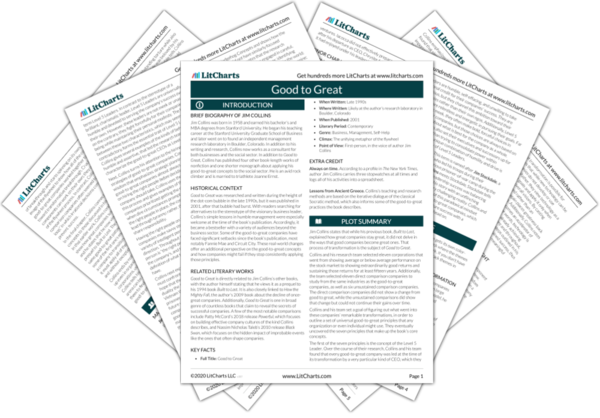Level 5 Leader Quotes in Good to Great
The business media called the move stupid and Wall Street analysts downgraded the stock. Smith never wavered. Twenty-five years later, Kimberly-Clark owned Scott Paper outright and beat Procter & Gamble in six of eight product categories. In retirement, Smith reflected on his exceptional performance, saying simply, “I never stopped trying to become qualified for the job.”

Unlock explanations and citation info for this and every other Good to Great quote.
Plus so much more...
Get LitCharts A+Level 5 leaders are a study in duality: modest and willful, humble and fearless. To quickly grasp this concept, think of United States president Abraham Lincoln (one of the few Level 5 presidents in United States history), who never let his ego get in the way of his primary ambition for the larger cause of an enduring great nation. Yet those who mistook Mr. Lincoln’s personal modesty, shy nature, and awkward manner as signs of weakness found themselves terribly mistaken, to the scale of 250,000 Confederate and 360,000 Union lives, including Lincoln’s own. While it might be a bit of a stretch to compare the good-to-great CEOs to Abraham Lincoln, they did display the same duality.
Level 5 Leaders look out the window to apportion credit to factors outside themselves when things go well (and if they cannot find a specific person or event to give credit to, they credit good luck). At the same time, they look in the mirror to apportion responsibility, never blaming bad luck when things go poorly.












